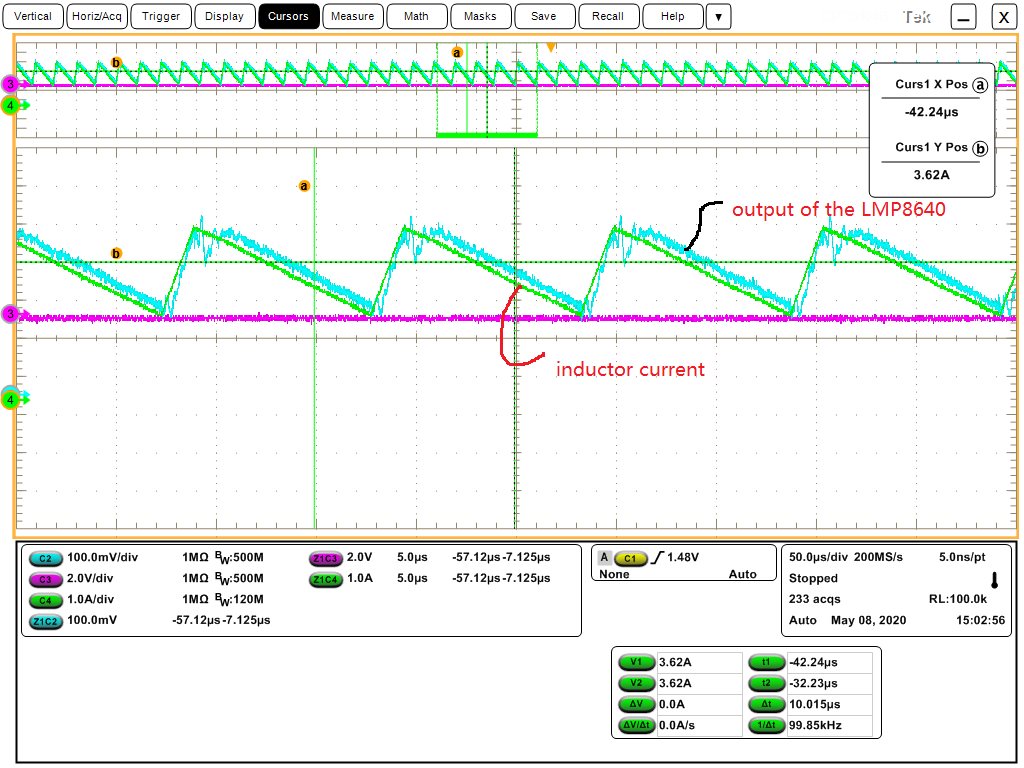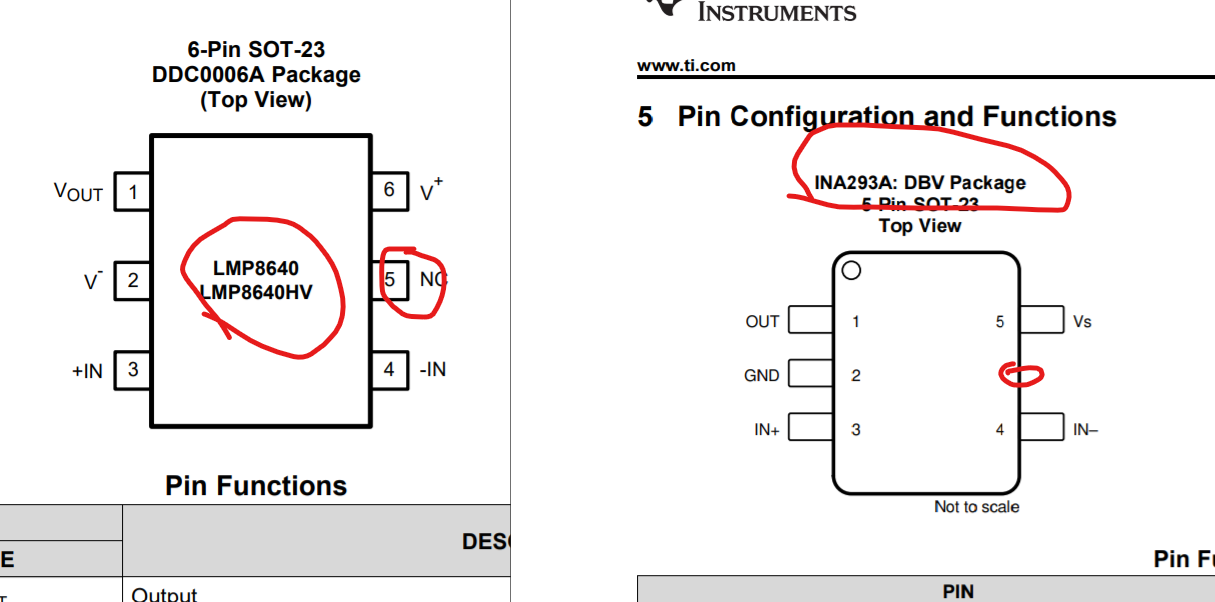Other Parts Discussed in Thread: INA240, INA293
I use the amplifer LMP8640 to sence the inductor current in the Buck converter, I chose the gain as 20, and sense resister 5m. Buck converter : input voltage: 12V; output voltage: 3.3V; output currrent:10A.
I found the output waveform of LMP8640 was strange, following is the waveform of the comparision between the inductor waveform and the output waveform of LMP8640? Dose anyone have any clue why there will be a drop in the output waveform when the switch is turned off and on?
My switch frequency is 100kHz.





